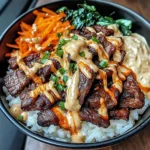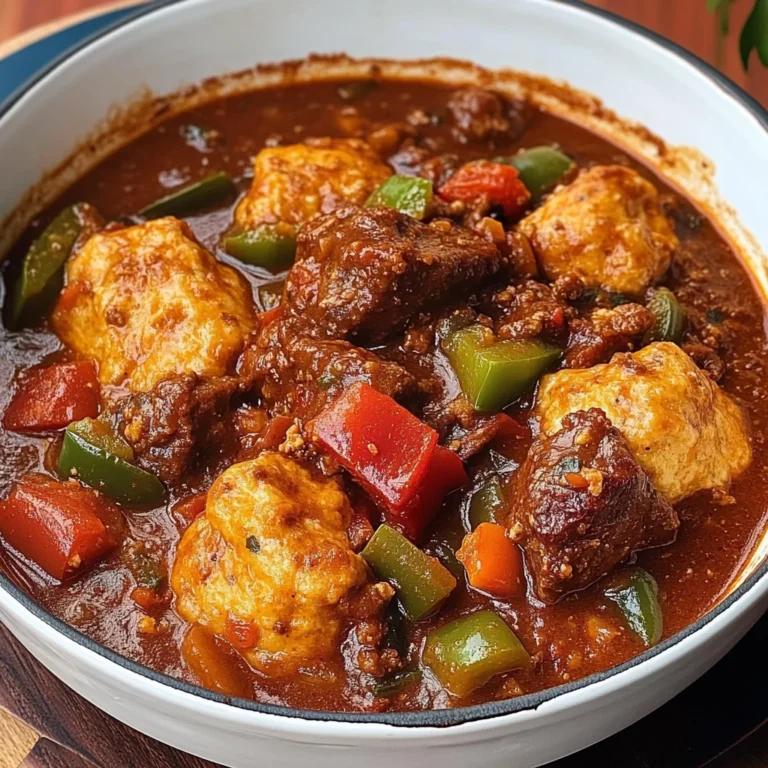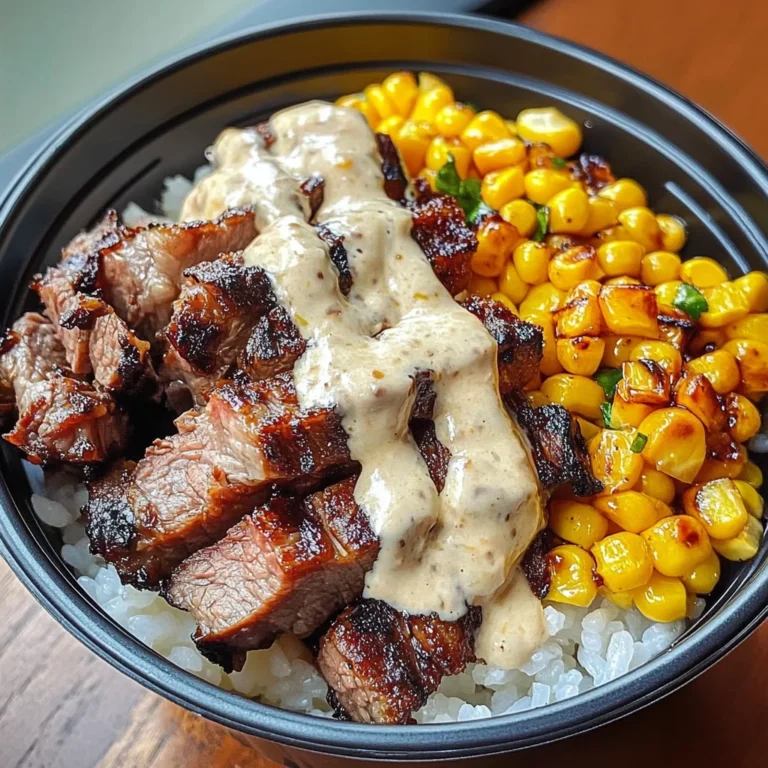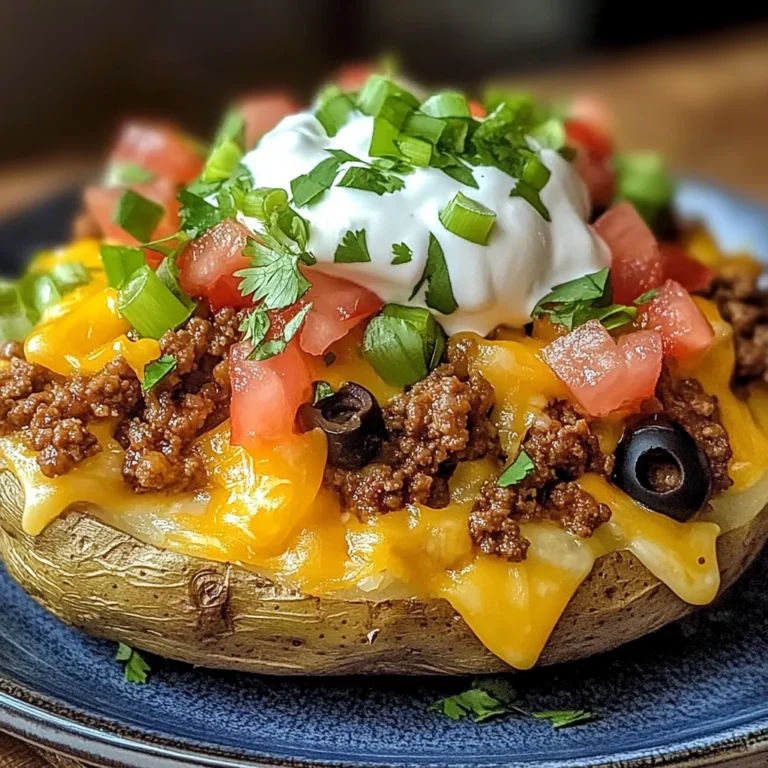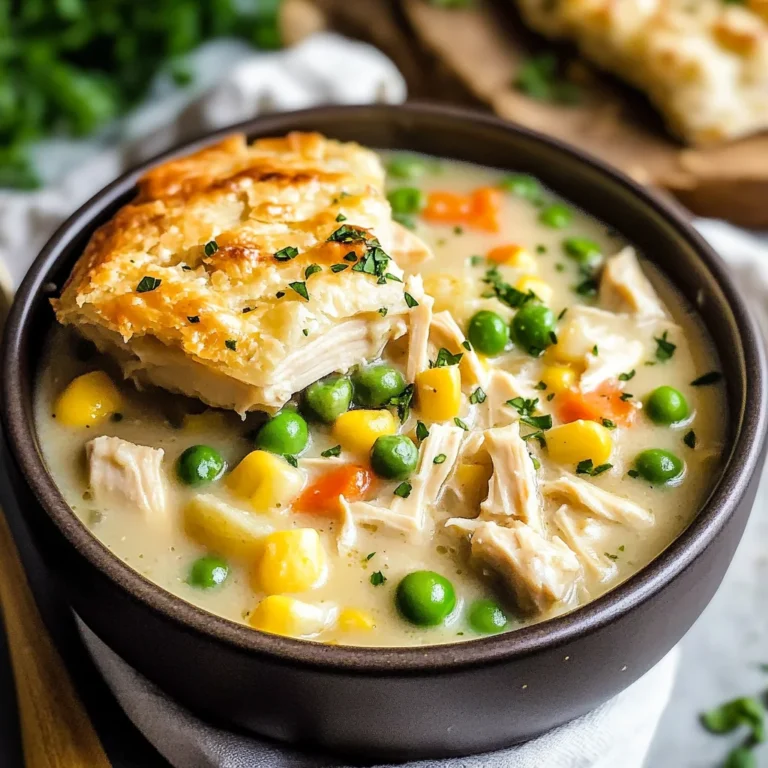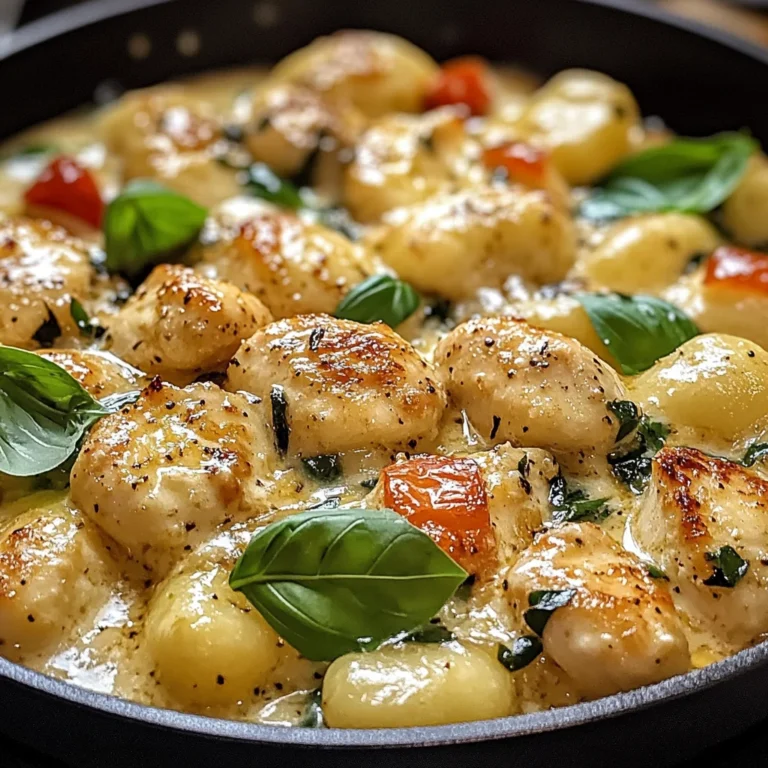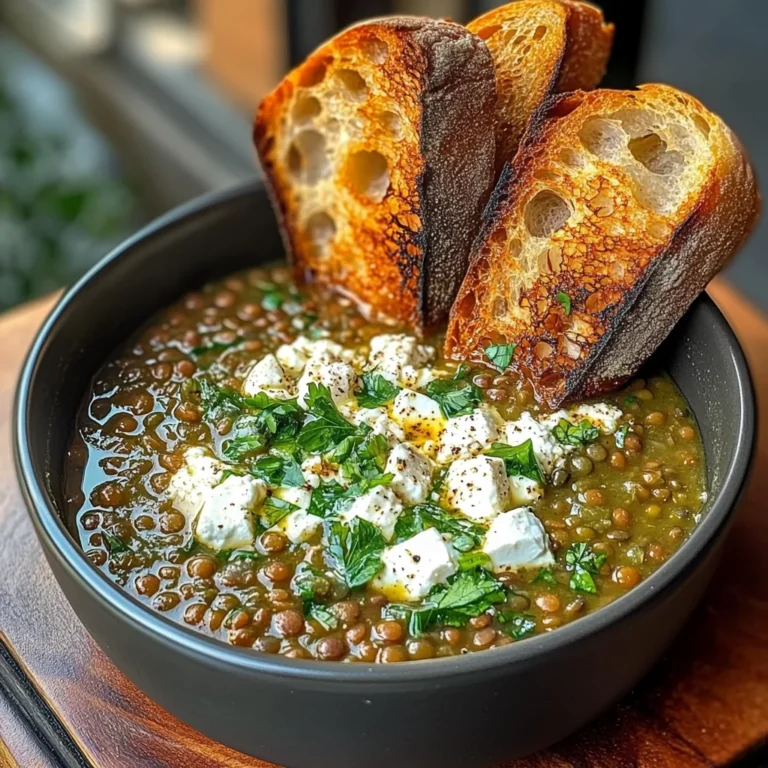Korean Beef Bibimbap With Gochujang Aioli
Korean Beef Bibimbap with Gochujang Aioli is a vibrant dish that brings together the bold flavors of Korea in a delightful and satisfying way. This recipe is perfect for any occasion, from a cozy family dinner to an impressive gathering with friends. The combination of fresh vegetables, tender beef, and spicy aioli makes this dish not only appealing but also versatile enough to suit various tastes. Enjoy the unique taste of Korean cuisine right at home!
Why You’ll Love This Recipe
- Quick Preparation: This recipe comes together in under 30 minutes, making it ideal for busy weeknights.
- Flavor Explosion: The combination of grilled beef and gochujang aioli offers a deliciously spicy kick that elevates your meal.
- Customizable Ingredients: Feel free to swap out vegetables or proteins based on your preference or what you have on hand.
- Nutrient-Packed: With fresh veggies like spinach and carrots, this bibimbap is as nutritious as it is tasty.
- Great for Meal Prep: Prepare individual servings in advance for quick lunches throughout the week.
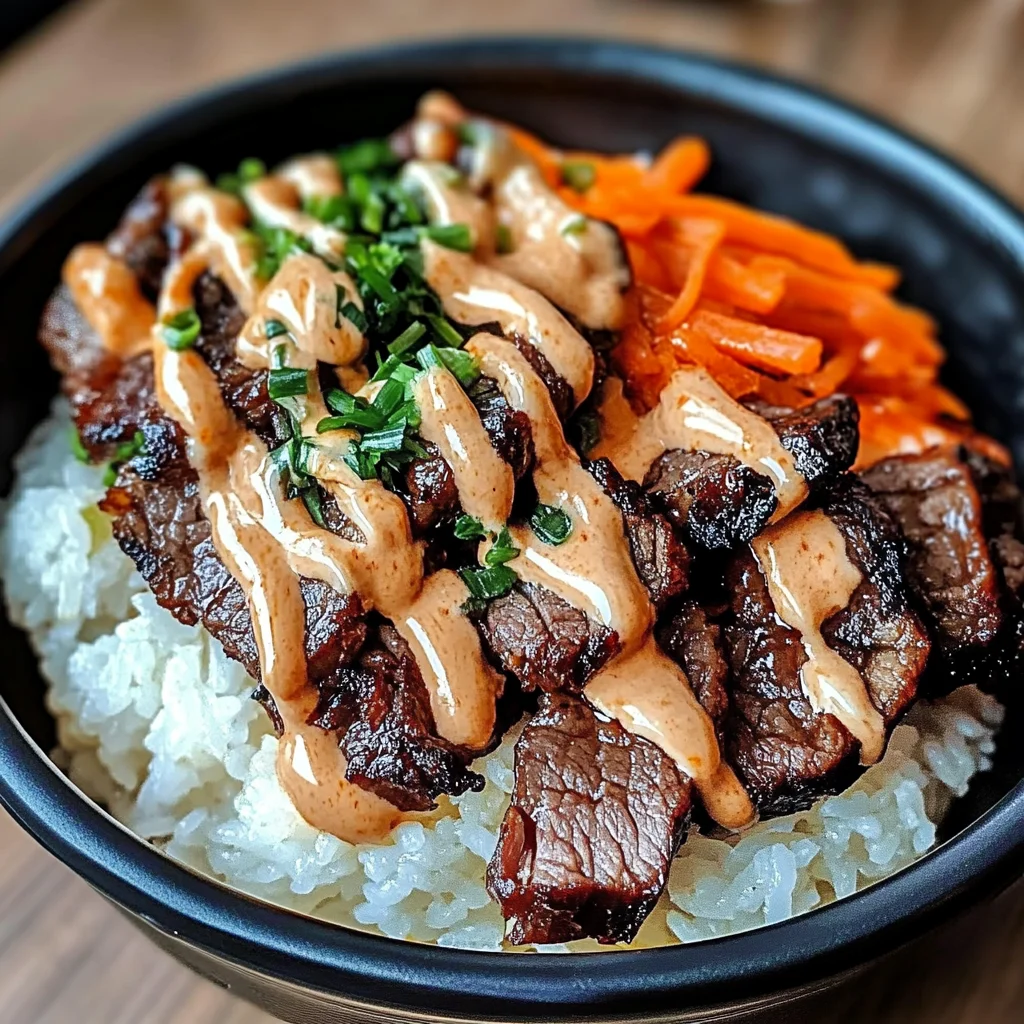
Tools and Preparation
To make Korean Beef Bibimbap with Gochujang Aioli, you’ll need a few essential tools to streamline your cooking process.
Essential Tools and Equipment
- Grill
- Mixing bowl
- Whisk
- Serving bowls
Importance of Each Tool
- Grill: Provides even cooking and adds a smoky flavor to the beef.
- Mixing bowl: Perfect for combining ingredients for the gochujang aioli smoothly.
- Whisk: Ensures that your aioli is mixed thoroughly for a creamy texture.
- Serving bowls: Ideal for presenting individual portions of bibimbap attractively.
Ingredients
For the Bibimbap:
- 1 pound boneless, skinless beef, cut into bite-sized pieces
- 1 tablespoon olive oil
- 1 teaspoon garlic powder
- 1/2 teaspoon onion powder
- 1/4 teaspoon salt
- 1/8 teaspoon black pepper
- 1 cup cooked rice
- 1 cup chopped spinach
- 1/2 cup chopped carrots
- 1/4 cup chopped red onion
- 1/4 cup chopped green onions
For the Gochujang Aioli:
- 1/4 cup mayonnaise
- 1 tablespoon gochujang (Korean chili paste)
- 1 teaspoon soy sauce
- 1/4 teaspoon garlic powder
- 1/8 teaspoon sesame oil
How to Make Korean Beef Bibimbap With Gochujang Aioli
Step 1: Grill the Beef
- Preheat your grill to medium-high heat.
- Season the beef with garlic powder, onion powder, salt, and black pepper.
- Grill the beef for 2-3 minutes per side, or until it’s cooked through.
Step 2: Make the Gochujang Aioli
- In a small bowl, combine mayonnaise, gochujang, soy sauce, garlic powder, and sesame oil.
- Whisk everything together until smooth and well combined.
Step 3: Assemble the Bibimbap
- Divide cooked rice among serving bowls.
- Top each bowl with grilled beef, chopped spinach, carrots, red onion, and green onions.
- Drizzle generously with gochujang aioli before serving.
Enjoy your Korean Beef Bibimbap with Gochujang Aioli as a delicious meal that will impress everyone at your table!
How to Serve Korean Beef Bibimbap With Gochujang Aioli
Korean Beef Bibimbap with Gochujang Aioli is a vibrant and delicious dish that can be enjoyed in various ways. Here are some serving suggestions to enhance your dining experience.
Bowl Style
- Use individual bowls for each serving, allowing everyone to mix their ingredients. This presentation makes it interactive and fun.
Family Style
- Serve the bibimbap on a large platter, allowing guests to take what they like. This encourages sharing and creates a communal atmosphere.
With Extra Toppings
- Add additional toppings such as fried eggs or sliced avocado for extra flavor and nutrition. These enhance the dish’s richness and texture.
As a Wrap
- Use lettuce leaves to create wraps filled with bibimbap ingredients. This adds a refreshing crunch and makes it easy to eat on the go.
How to Perfect Korean Beef Bibimbap With Gochujang Aioli
To make your Korean Beef Bibimbap with Gochujang Aioli truly exceptional, consider these helpful tips:
- Choose Quality Beef: Select tender cuts of beef for the best texture and flavor in your bibimbap.
- Cook Rice Properly: Ensure your rice is fluffy and not overcooked. This forms a perfect base for your bibimbap.
- Adjust Spice Level: Experiment with the amount of gochujang in the aioli to find your preferred spice level.
- Fresh Vegetables: Use fresh, seasonal vegetables for added crunch and nutrition. This elevates the overall freshness of the dish.
- Presentation Matters: Arrange your ingredients thoughtfully in the bowl for an appealing look that tempts the appetite.
- Make Ahead: Prepare components like the aioli or grilled beef ahead of time to save effort when serving.
Best Side Dishes for Korean Beef Bibimbap With Gochujang Aioli
Pairing side dishes with Korean Beef Bibimbap with Gochujang Aioli can elevate your meal experience. Here are some excellent options:
- Kimchi: A traditional fermented side that adds spice and tang, complementing the flavors of bibimbap perfectly.
- Korean Pickled Radish (Danmuji): This sweet and tangy side provides a refreshing contrast to the rich ingredients.
- Seaweed Salad: Light and flavorful, seaweed salad adds a nice texture while keeping things healthy.
- Korean Fried Zucchini (Hobak Jeon): Crispy zucchini pancakes bring a delightful crunch that’s perfect alongside bibimbap.
- Spicy Cucumber Salad (Oi Muchim): A refreshing salad that balances heat with its coolness, making it an ideal partner for spicy dishes.
- Korean Tofu Stew (Sundubu-jjigae): A warm, comforting stew that pairs well with the flavors of bibimbap, adding heartiness to the meal.
- Stir-Fried Bean Sprouts (Sookju Namul): Lightly seasoned bean sprouts provide crunch and are a nutritious addition to your meal.
- Sweet Potato Noodles (Japchae): These stir-fried glass noodles add sweetness and chewiness, enhancing your dining experience.
Common Mistakes to Avoid
When preparing Korean Beef Bibimbap with Gochujang Aioli, it’s easy to make a few common mistakes. Here are some tips to help you perfect your dish.
-
Seasoning Errors: Not seasoning the beef properly can lead to bland flavors. Always ensure you use enough seasoning before grilling for the best taste.
-
Overcooking the Beef: Overcooking can make your beef tough and chewy. Grill just until it’s cooked through, about 2-3 minutes per side, for tender results.
-
Skipping the Aioli: The gochujang aioli is crucial for adding flavor. Don’t skip this step; it’s what makes your bibimbap truly delicious!
-
Ignoring Fresh Ingredients: Using wilted or old vegetables can ruin your dish’s texture and taste. Always opt for fresh produce to enhance your bibimbap.
-
Forgetting Customization: Bibimbap is all about variety! Don’t hesitate to add or substitute your favorite veggies or proteins to suit your taste.
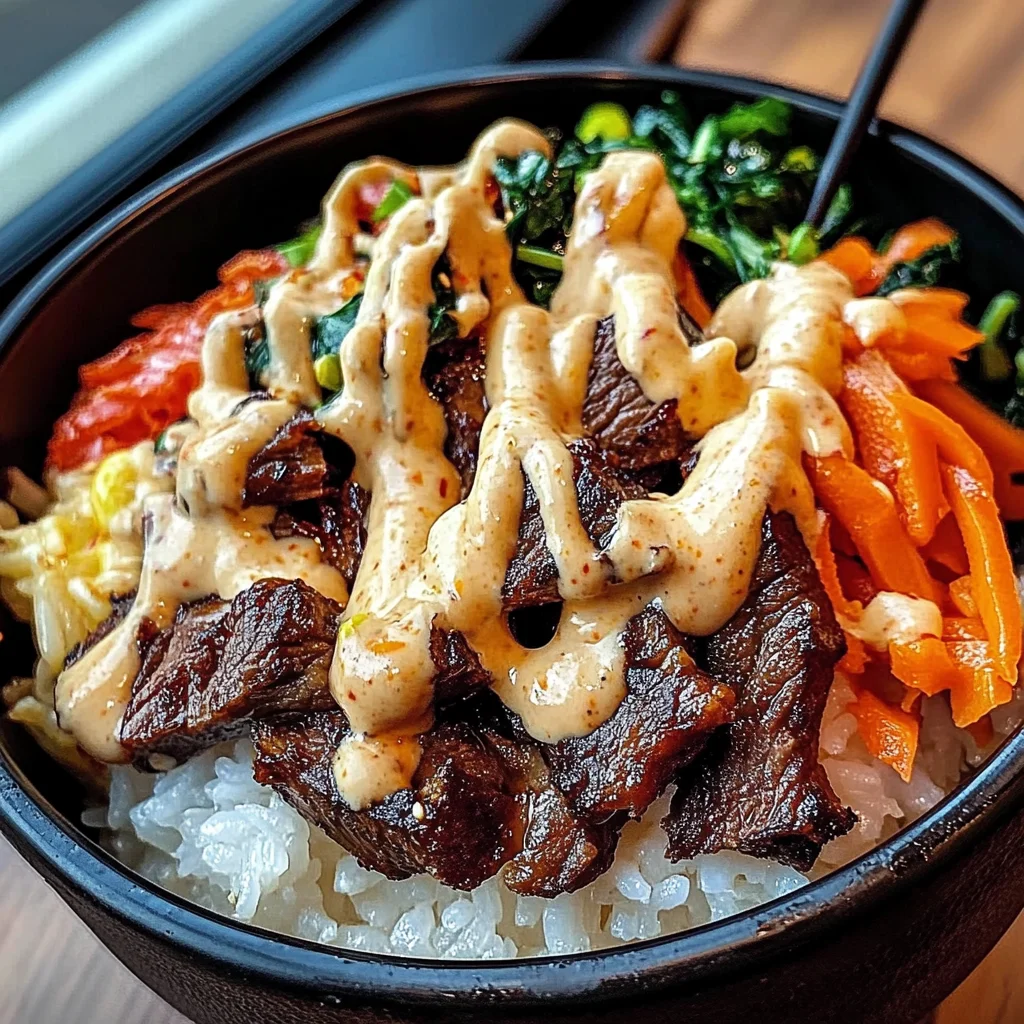
Storage & Reheating Instructions
Refrigerator Storage
- Store leftover bibimbap in an airtight container.
- It will last up to 3 days in the refrigerator.
Freezing Korean Beef Bibimbap With Gochujang Aioli
- You can freeze portions for later enjoyment.
- Make sure to place it in freezer-safe containers, and it will keep well for up to 2 months.
Reheating Korean Beef Bibimbap With Gochujang Aioli
- Oven: Preheat to 350°F (175°C) and heat the bibimbap in an oven-safe dish for about 15-20 minutes.
- Microwave: Place in a microwave-safe bowl and reheat on high for 1-2 minutes, stirring halfway through.
- Stovetop: Heat in a skillet over medium heat, stirring occasionally until warmed through.
Frequently Asked Questions
Here are some common questions about making Korean Beef Bibimbap with Gochujang Aioli.
Can I use other meats for Korean Beef Bibimbap With Gochujang Aioli?
Yes! You can substitute chicken, pork, or even tofu if you prefer a vegetarian option. Just adjust cooking times accordingly.
What types of vegetables are best for bibimbap?
You can use a variety of vegetables like zucchini, mushrooms, or bell peppers. Feel free to mix and match based on your preference!
How spicy is the Gochujang Aioli?
The spice level varies with the amount of gochujang used. Start with one tablespoon and add more if you like it spicier!
Can I prepare the ingredients ahead of time?
Absolutely! You can marinate the beef and chop the vegetables in advance. This will save time when you’re ready to assemble your bibimbap.
Final Thoughts
Korean Beef Bibimbap with Gochujang Aioli is not only delicious but also incredibly versatile. Feel free to customize it with different proteins or veggies based on what you have on hand. This dish is perfect for both busy weeknights and special occasions—try it out today!
Korean Beef Bibimbap with Gochujang Aioli
Korean Beef Bibimbap with Gochujang Aioli is a colorful and flavorful dish that beautifully showcases the bold tastes of Korean cuisine. This vibrant rice bowl features tender grilled beef, fresh vegetables, and a spicy gochujang aioli that ties everything together. Perfect for any occasion, whether it’s a weeknight dinner or a gathering with friends, this recipe is both satisfying and customizable to fit various dietary preferences. You can easily adjust the ingredients to suit your taste, making it an ideal choice for families or meal prep enthusiasts.
- Prep Time: 10 minutes
- Cook Time: 20 minutes
- Total Time: 30 minutes
- Yield: Serves 4
- Category: Dinner
- Method: Grilling
- Cuisine: Korean
Ingredients
- 1 pound boneless, skinless beef
- 1 tablespoon olive oil
- 1 teaspoon garlic powder
- 1/2 teaspoon onion powder
- 1/4 teaspoon salt
- 1/8 teaspoon black pepper
- 1 cup cooked rice
- 1 cup chopped spinach
- 1/2 cup chopped carrots
- 1/4 cup chopped red onion
- 1/4 cup chopped green onions
- 1/4 cup mayonnaise
- 1 tablespoon gochujang (Korean chili paste)
- 1 teaspoon soy sauce
- 1/4 teaspoon garlic powder
- 1/8 teaspoon sesame oil
Instructions
- Preheat grill to medium-high heat. Season beef with garlic powder, onion powder, salt, and pepper. Grill for 2-3 minutes per side until cooked through.
- In a small bowl, mix mayonnaise, gochujang, soy sauce, garlic powder, and sesame oil until smooth to create the aioli.
- In serving bowls, layer cooked rice, grilled beef, spinach, carrots, red onion, and drizzle with gochujang aioli.
Nutrition
- Serving Size: 1 bowl (approximately 400g)
- Calories: 540
- Sugar: 3g
- Sodium: 920mg
- Fat: 25g
- Saturated Fat: 4g
- Unsaturated Fat: 18g
- Trans Fat: 0g
- Carbohydrates: 52g
- Fiber: 4g
- Protein: 30g
- Cholesterol: 80mg

